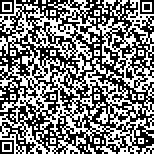下载中心
优秀审稿专家
优秀论文
相关链接
摘要

及时获取有效的土地覆盖信息是地球系统模拟的基础。因此,中等空间分辨率传感器如MODIS或MERIS空前的通道设置与观测能力,使其具有快速更新土地覆盖图的能力。本文说明了如何结合MERIS的空间维(像元大小为300m)、光谱维(可见光与近红外范围内15个通道)和时间维(重返周期2—3d),用于获取不同区域土地覆被组分的亚像元级组成权重。利用4月、7月和8月三期MERIS FR1b级数据得到荷兰主要土地覆被类型的组成权重。单一时相和多时相的数据都使用单个像元最优化的端元数进行线性光谱分解。利用一种形态偏离指数得到MERIS的空间维并用于端元的选择。应用荷兰土地利用数据库(LGN5)25m分辨率的栅格数据作为本文的参考数据。基于这种数据的高分辨率,因此可以从像元和亚像元的水平同时评价的分类精度。结果显示,结合4月和7月的影像可以获得最优的分类结果,精度约为58%。总的说来,亚像元和像元级的分类精度相似。通过几种组分类别和日期的光谱融合表明,物候状况对于数据获取时相最佳结合的选择以及正确识别土地覆盖类型的重要性。
Getting reliable and up-to-date land cover information is essential to model the Earth system.In this respect,the observation capabilities of medium spatial resolution sensors like MODIS or MERIS are offering new land cover mapping possibilities because of the unprecedented resolutions of these sensors.This paper illustrates how the combination of the spatial(300m pixel size),spectral(15 narrow bands in the visible and NIR),and temporal(revisit time 2-3 days) dimensions of MERIS can be used to retrieve sub-pixel fractional land cover composition over heterogeneous areas.Three MERIS FR Level 1b scenes acquired over The Netherlands in April,July and August 2003 were used to derive fractional composition of the main land cover types present in The Netherlands.A linear spectral unmixing with an optimized number of endmembers per pixel was applied both in a mono-and in a multi-temporal way.A morphological eccentricity index(MEI) was used to explore the MERIS spatial dimension and,subsequently,to support the selection of the endmembers.The Dutch land use database(LGN5),which has a grid structure with a pixel size of 25m,was used as a reference in this study.Classification accuracy was assessed both at per-pixel and at sub-pixel level because of the availability of this high resolution reference data.The best classification results were obtained for the combined image of April and July with a classification accuracy of about 58%.In general,sub-pixel and per-pixel classification accuracies were found to be similar.Spectral confusion was detected for several classes and dates indicating that the phenological status plays an important role in choosing the optimal combination of acquisition dates and the land cover classes that can be properly identified.

